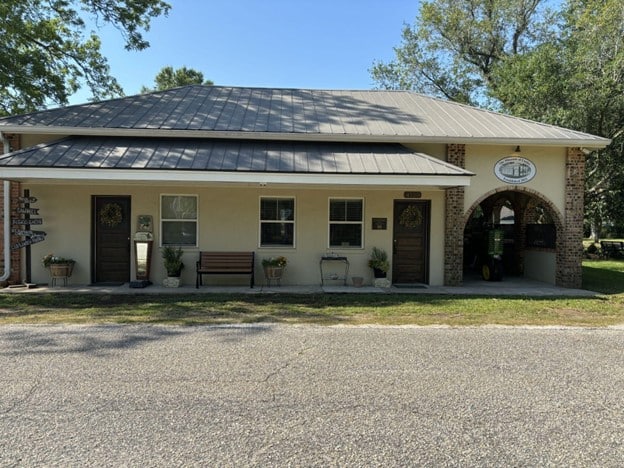Choosing the right dumpster size can feel overwhelming, but it doesn't have to be! This comprehensive guide breaks down the common dumpster sizes, their dimensions, weight capacities, and what you can (and can't) dispose of in each. Whether you're tackling a small home renovation or a large-scale construction project, we'll help you find the perfect fit for your waste removal needs.
What Are the Common Dumpster Sizes?
Understanding common dumpster sizes is crucial for efficient waste management. State Standard bin sizes range from small 10-yard containers ideal for minor projects to massive 40-yard options suited for extensive construction or large-scale cleanups. Considering factors like project scale, waste type, and available space will guide your selection towards the most appropriate dumpster size for your specific requirements. This ensures you avoid overspending on unnecessary capacity or facing the inconvenience of insufficient space. Let's explore the typical options available.
10 Yard Dumpsters
These smaller dumpsters are perfect for small-scale projects, such as minor home repairs, small cleanups, or landscaping projects generating limited debris. They're a cost-effective solution for managing smaller volumes of waste, offering a convenient and manageable option for various smaller-scale disposal needs.
15 Yard Dumpsters
Stepping up in size, 15-yard dumpsters are suitable for slightly larger projects, such as medium-sized renovations, larger yard waste removal, or small construction jobs. They provide added capacity while still remaining relatively easy to maneuver and place on your property.

20 Yard Dumpsters
For larger home renovation projects or significant cleanouts, the 20-yard dumpster is a common choice. They offer ample space for substantial waste generation, striking a balance between capacity and practicality for moderately sized projects.
30 Yard Dumpsters
Major construction projects or large-scale estate cleanouts often necessitate the capacity of a 30-yard dumpster. These larger containers provide significantly increased space for substantial volumes of waste disposal, making them the ideal solution for extensive projects with substantial debris generation.
40 Yard Dumpster
At the top end of the scale, 40-yard dumpsters are best suited for truly massive projects such as large-scale construction sites or commercial waste removal operations. These units are designed to handle immense volumes of waste and are appropriate for extensive and significant disposal requirements.

How Do I Choose the Right Dumpster Size?
Selecting the correct dumpster size involves careful consideration of several key factors, directly impacting project efficiency and cost-effectiveness. Accurate assessment of your needs ensures the right size container, preventing both overspending and insufficient space. Let's break down the essential aspects.
Consider Project Type
The type of waste generated significantly influences the required dumpster size. Construction debris, for instance, often requires a larger dumpster than household junk or yard waste due to its density and volume. Matching dumpster capacity to the waste type ensures optimal waste management.
Volume of Debris
Accurately estimating the amount of material needing disposal is critical. Underestimating can lead to overflowing dumpsters and additional charges, while overestimating results in unnecessary costs. Careful planning and accurate volume assessment are key to selecting the right size.
Space Availability
Before renting, ensure adequate space for dumpster placement on your property. Consider access points, maneuvering room, and any potential obstructions. Choosing a dumpster that fits your site's constraints prevents delays and unnecessary complications.
What Are the Dimensions of Each Dumpster Size?
Understanding the physical dimensions of different dumpster sizes helps in planning for placement and accessibility. These dimensions provide a clear picture of the space requirements for each container. The dimensions below are approximate and may vary slightly depending on the manufacturer.
10 Yard Dumpster Dimensions
Approximately 12 ft long x 8 ft wide x 4 ft high.
15 Yard Dumpster Dimensions
Approximately 14 ft long x 8 ft wide x 4.5 ft high.
20 Yard Dumpster Dimensions
Approximately 22 ft long x 8 ft wide x 4.5 ft high.
30 Yard Dumpster Dimensions
Approximately 22 ft long x 8 ft wide x 6 ft high.
40 Yard Dumpster Dimensions
Approximately 22 ft long x 8 ft wide x 8 ft high.
What Can I Dispose of in a Dumpster?
Knowing what materials are acceptable and prohibited in dumpsters is essential to avoid penalties and ensure responsible waste disposal. Compliance with regulations is vital to maintain safety and environmental responsibility.
Acceptable Waste
Generally, dumpsters accept common household junk, construction debris (wood, concrete, drywall), and yard waste (leaves, branches, grass clippings). Always verify specific acceptable materials with your rental provider, as regulations can vary.
Prohibited Items
Hazardous materials, such as chemicals, paints, oils, and asbestos, are strictly prohibited. Electronics, medical waste, and appliances often have specific recycling or disposal requirements separate from standard dumpsters. Adhering to these restrictions is crucial for safety and environmental protection.
How Much Weight Can Each Dumpster Hold?
Weight limits are crucial to avoid exceeding the dumpster's capacity, resulting in costly overage charges. Understanding these limits ensures responsible waste management and prevents unforeseen expenses. The weight limits below are typical but can vary slightly based on the rental provider.
Weight Limits Overview
- 10 yard: Up to 2 tons (4,000 lbs) 15 yard: Up to 3 tons (6,000 lbs) 20 yard: Up to 4 tons (8,000 lbs) 30 yard: Up to 5 tons (10,000 lbs) 40 yard: Up to 6 tons (12,000 lbs)
What is Eco-Friendly Junk Removal?
Eco-friendly junk removal prioritizes sustainable waste management practices. This often involves diverting recyclable and reusable materials from landfills, promoting responsible disposal methods that minimize environmental impact. Choosing an eco-conscious provider contributes to a more sustainable waste management system.
Tips for Efficient Dumpster Use
Maximizing dumpster space and minimizing costs requires strategic loading techniques. Proper loading ensures optimal space utilization and avoids potential issues during pickup.
How to Properly Load a Dumpster
Distribute heavier items evenly throughout the dumpster to avoid overloading one area. Ensure items are placed strategically to maximize space. Avoid overloading to prevent safety hazards and potential fines.
FAQ Section
What does a 10 yard dumpster look like?
A 10-yard dumpster is relatively small, often suitable for smaller projects. Its size is comparable to a standard pickup truck bed.
Can I rent a dumpster for one day?
Rental periods vary depending on the provider. Contact your local dumpster rental company for specific options.
What happens if I exceed the weight limit?
Exceeding the weight limit will typically result in additional charges. This is detailed in the rental agreement.
Is there a difference between residential and commercial dumpsters?
Sometimes, yes. Commercial dumpsters might have higher weight limits and different permitted waste types. Clarify this with the rental company.
In conclusion, selecting the right dumpster size requires careful consideration of your project's scale, waste type, and available space. By understanding the common sizes, their dimensions, weight capacities, and permitted waste materials, you can make an informed decision, ensuring a smooth and efficient waste disposal process. Contact your local dumpster rental service today to get started on your project!